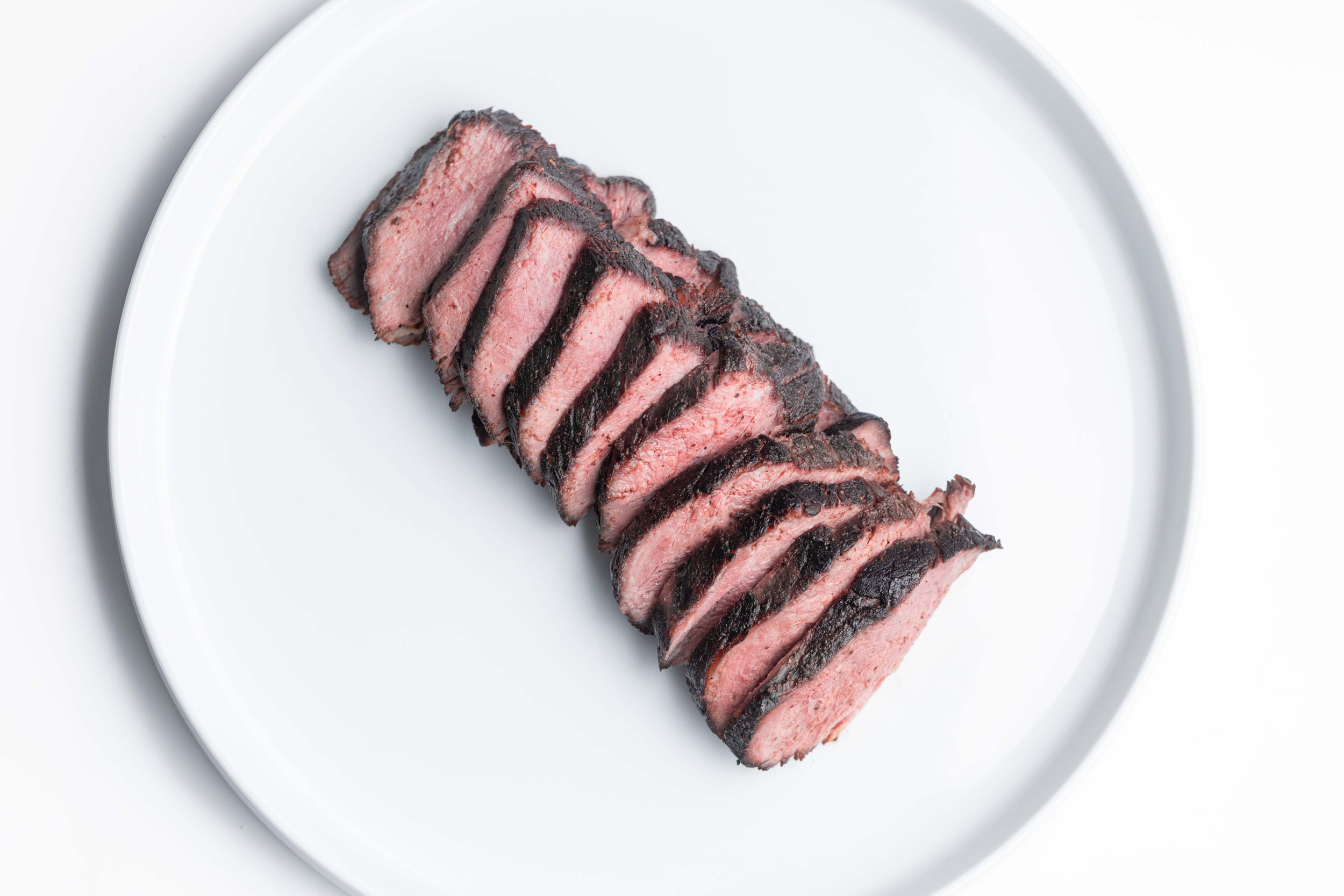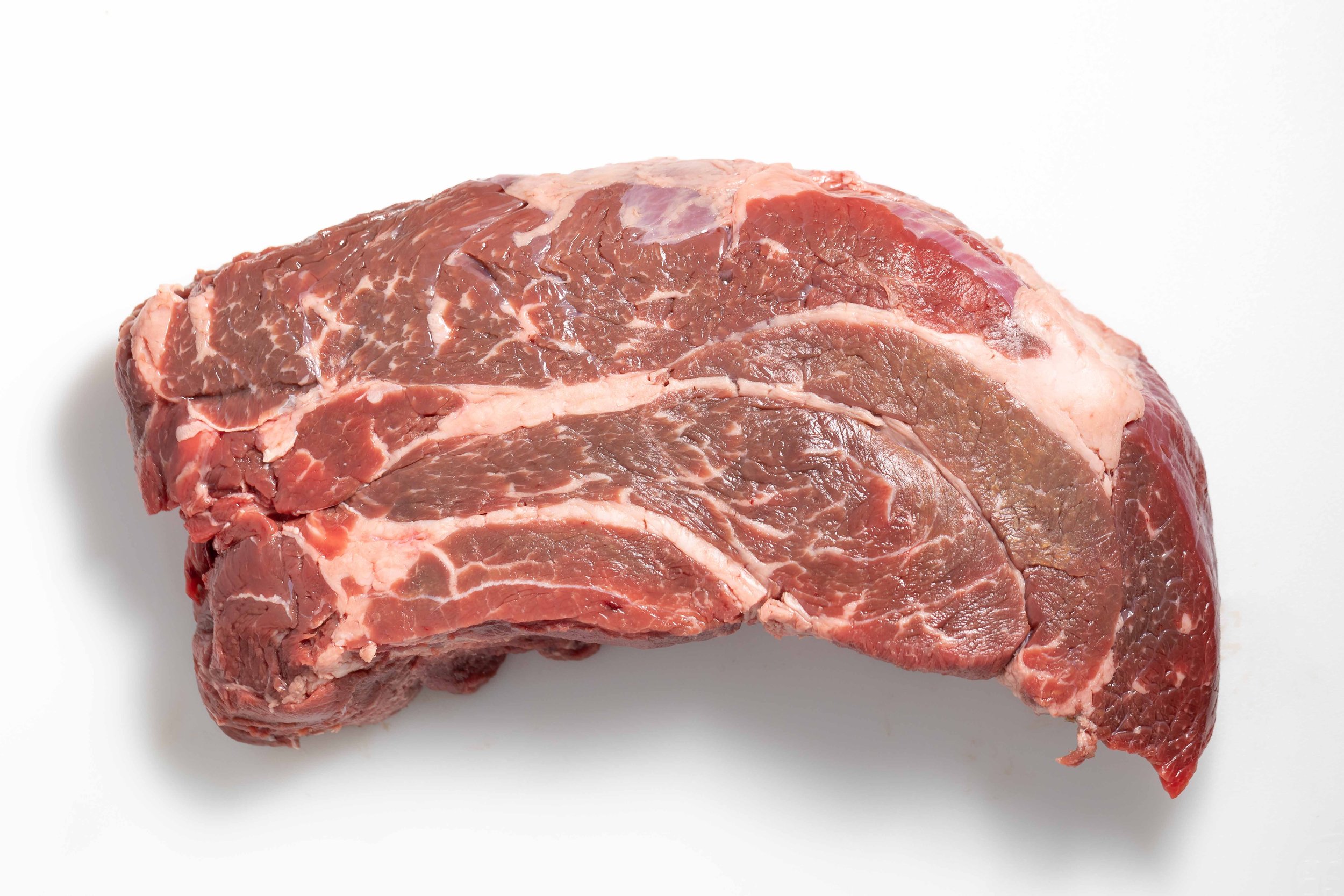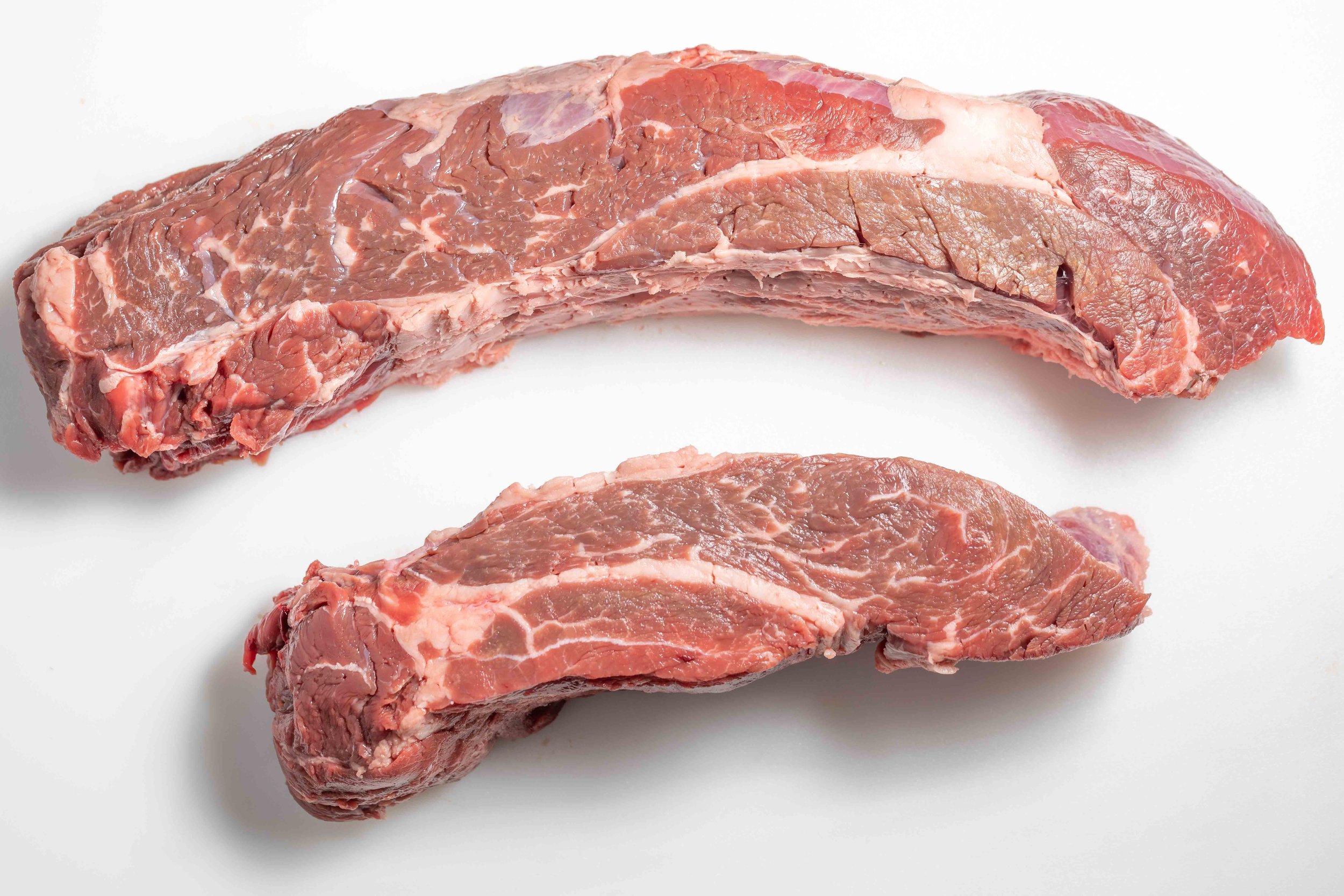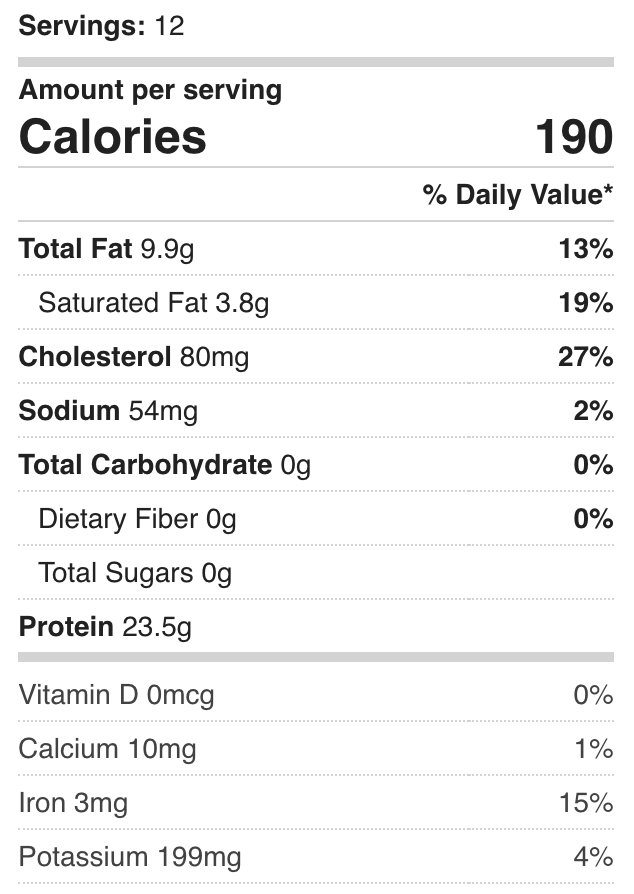Sous Vide Chuck Steak
Why Make It?
Chuck is a very flavorful cut. Sous vide keeps the great flavor and transforms the chuck into a very tender steak.
The chuck stores perfectly in the freezer. Make a batch and use it when you need it during the week. You will turn your everyday meals into something special.
Keys to Success
Chuck is a large primal cut with many muscles. Not all pieces will cook the same. Check for tenderness and consider cooking some pieces shorter or longer.
When slicing to serve, check the direction of the grain to ensure you are cutting against the grain.
Be aggressive with the final sear— this is where a lot of flavor is developed. Pat the meat dry [pat the meat very dry] and ensure the pan is hot with the oil near smoking.
Author Thoughts
Chuck is so versatile. Typically used for stews, or ground meat, this recipe transforms the tougher cut into steak worthy of any occasion. Try using this recipe in any place you would eat steak. If I could only buy one cut of beef it would be chuck.
Butchering
At the store look for chuck labeled as Beef Chuck Pot Roast, Beef Chuck Steak or Center Cut Chuck Roast. Not all chuck steaks are the same since each steak will come from a different part of the chuck and cut to different thickness.
You could cook the entire cut as is; I often prefer to make some cuts. When buying a chuck steak I will be searing in a pan, I look for the thickest piece that has a well defined muscle separation going down the middle. I cut along this seam. [See the photos] You should not have to use your knife too much as the muscles will want to pull apart here.
Butchering this way does a couple things. After being sous vide, the steak will want to pull apart at each of the different muscles. If you leave the steak whole, slicing to serve is messy and hard to find the grain. You will likely end up cutting in the same place you could have cut before cooking. This leads to the most important point, butchering before cooking allows you to get more surface area and browning on each slice of steak! For each cut there will be two more sides that can be browned.
If I am looking to grill the chuck steak. I will look for a piece that doesn't have this well defined muscle separation down the middle. These steaks are generally smaller. The smaller steaks will also be easier to fit into a standard sealer bag.
One final thought. If you try this and like the results. You could buy a large chuck roast that has not been cut into steaks. This will give you even more freedom to cut better portioned steaks. You could also use the cut to make a sous vide chuck roast. Check the related reading section.
Time and Temp
Sous vide chuck is enough of a reason to get into sous vide cooking. Don't be intimidated. All you need is a sous vide immersion circulator. As for sealing, ziplock bags work fine. A vacuum or chamber sealer may give you better results if you want long term fridge/freezer storage.
Temperature is an important variable when cooking sous vide. The recipe calls for 135 F [57 C]. I think this is the best place to start. If you don't like medium-rare to medium steak consider increasing the temperature to 140 F. I would not go much higher; you would be getting close to braised beef instead of steak. Increasing the temperature will decrease the cook time. Try 20-24 hours at 140 F.
Time is another variable when cooking sous vide. The recipe calls for 24 hours. You could go shorter or longer; anything from 18-40 hours. The shorter time will lead to a less tender steak, but less moisture loss. A longer time will result in a more tender steak, but more moisture loss. There is a sweat spot that involves personal preference. This is a well looked at concept in sous vide cook, read here if interested.
I would not worry about adjusting time based on temperature. There is a lot of flexibility with the time here. 24 hours will give a good result at any temperature from 130 -145 F.
Chuck steaks have multiple muscles. These muscles will cook differently; some are tender and some are tougher. If you are butchering, consider pulling some cuts out before others. I start checking bags at 20 hours and do a poke and squeezing test to assess tenderness. Pulling some pieces out at 18, 24, and 36 hours will be informative and help you find your best cook time.
Equipment
sous vide immersion circulator
Sous Vide Chuck Steak
Makes: 12 Servings | Prep Time: 10 min | Cook Time: 24 hr | Total Time: ~24 hr
Ingredients
- 2-4 lb beef chuck roast
- black pepper
- kosher salt [to taste]
Instructions
- Prep: Add a large container with water and turn your immersion circulator to 135 F [57 C]. Decide if you are butchering the chuck. If you are, lift one end of the chuck and use a sharp knife to cut along the seam using a pull and cut motion. [see image #1 & #2] Trim any fat that you would not want to eat. Salt the chuck. Add the chuck to a sealer bag. Seal with a vacuum or chamber sealer. See notes for using Ziplock bags.
- Sous Vide: Add the sealed and salted chuck to the heated water. Cover the water bath to decrease water evaporation and heat loss. Cook for 20 hours. Check for tenderness by pulling out each bag and squeeze n’ poking. If you want a more tender steak, keep going for 24 hours. Repeat with the max time of 36 hours. Remove the chuck and cool. If you're not eating it now, transfer it to the refrigerator or freezer.
- Dry: Remove the chuck from the bag and thoroughly dry the exterior. If you have time, consider drying by hand and placing the steaks onto a wire rack in the refrigerator. Season with black pepper.
- Sear: Get a medium to large pan and set on medium-high heat. Once hot, add oil and immediately follow with the chuck steak. Rotate the steak in the pan to ensure there is no sticking and to get even browning. Consider pressing on the beef to ensure good contact with the pan and use a towel to protect yourself from oil splatter. Once browned, 30-60 seconds, flip. Repeat until all sides are browned. If you want more color, go back to any side and repeat. I shoot for an almost black colored exterior.
Substitutions
Black Pepper: If you have a plan for the steak, consider adding additional spices before searing. Don't use dried herb, onion powder, or garlic powder as they will burn at the high searing temp.
Nutrition
*The % Daily Value (DV) tells you how much a nutrient in a food serving contributes to a daily diet. 2,000 calories a day is used for general nutrition advice.
The nutrition information is calculated by a database and is an estimate.
Recipe Images
#1
#2
Related Readings
Reddit - Steak cooking temperature below 130 and food safety question, r/sousvide - https://www.reddit.com/r/sousvide/comments/4ain86/steak_cooking_temperature_below_130_and_food/
Youtube - Transform Tough Chuck into a Tender Holiday Feast - https://www.youtube.com/watch?v=nRR5sfs0gFQ
Modernist Cuisine - Volume 2 Techniques and Equipment, Chapter 9 Cooking Sous Vide













